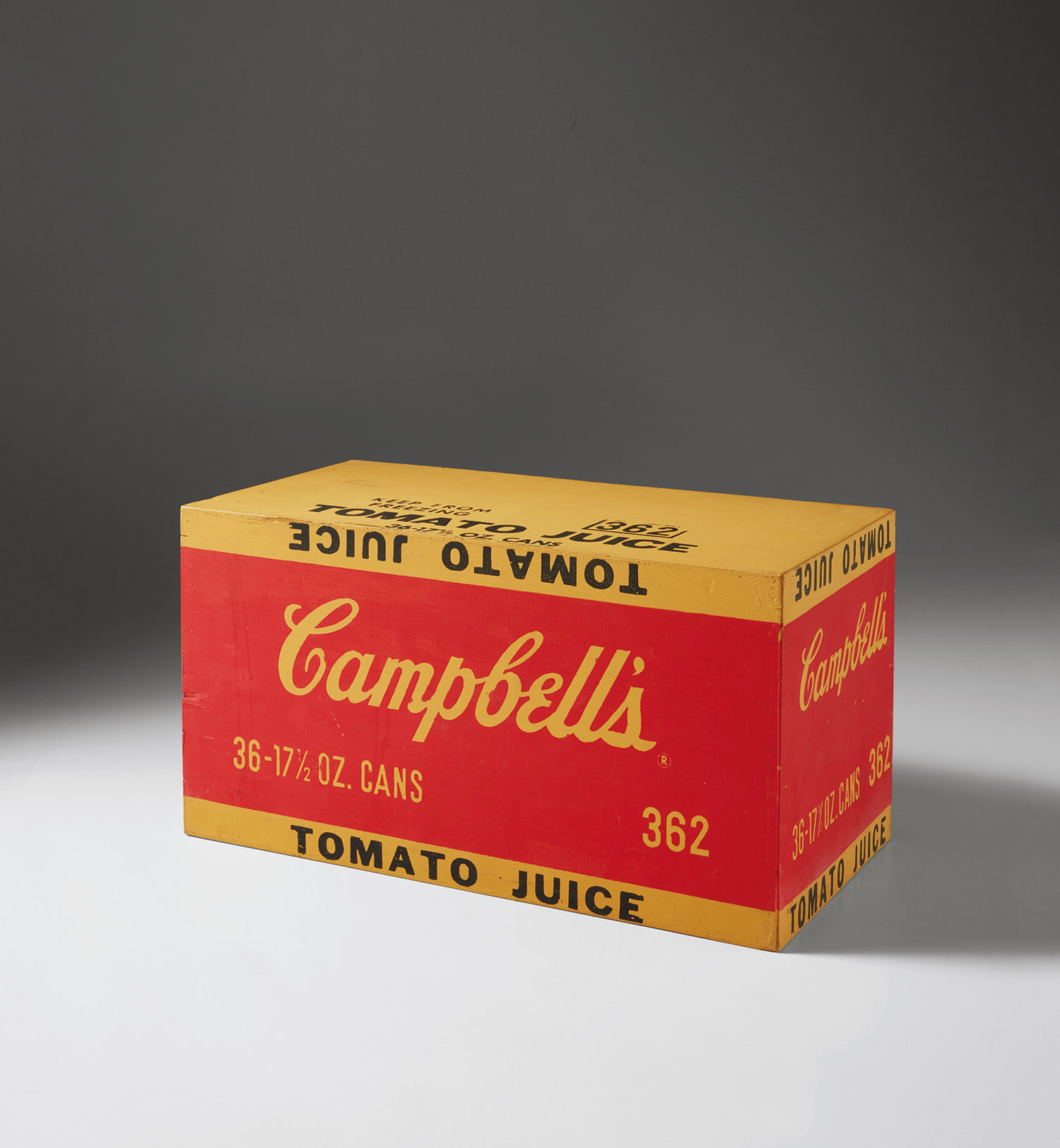

163
Andy Warhol
Campbell's Tomato Juice Box
Full-Cataloguing
Executed in 1964, Campbell’s Tomato Juice Box belongs to Andy Warhol’s iconic box sculptures that came to define the Pop art movement. A tongue-in-cheek replica of the boxes used to package and ship the consumer staple Campbell’s Tomato Juice, this work belongs to the larger series of box sculptures that Warhol created in 1964 and exhibited at his second exhibition at the Stable Gallery, New York, in the same year. Consisting of, among others, his Kellogg’s Cornflakes, Heinz Tomato Ketchup, and Brillo Soap Pads box sculptures, this exhibition presented an immersive floor to ceiling installation that transformed the gallery into what appeared to be a supermarket stockroom – the dazzling show becoming a rallying point for both those for and against Pop art.
An icon of Pop art, Campbell’s Tomato Juice Box illustrates how Warhol developed his consumer-product imagery further in three dimensions. The seeds for Warhol’s box sculptures were laid in early 1962 when Warhol produced a three-dimensional version of his Campbell Soup Cans paintings. Over the next year and a half, he developed this initial idea further by screen printing imitation lettering and logos of such consumer staples as Campbell’s Tomato Soup, Kellogg’s Cornflakes, and Heinz Tomato Ketchup on screenprinted plywood boxes. Between March and April 1964, in anticipation of his Stable Gallery exhibition, he then worked with craftsmen to fabricate numerous plywood boxes identical in size and shape to supermarket cartons, which he then painted and silkscreened with stencils based off of grocery cartons with assistance from Gerard Malanga and Billy Name-Linich in his New York City studio. Famously known as The Factory, the studio brilliantly subverted traditional notions of art making. Not only was Warhol embracing the industrial process of silkscreening, works such as the present one radically re-defined traditional notions of sculpture at large.
Embracing an artistic process that called to mind a factory assembly line, Warhol brilliantly re-imagined the Duchampian ready-made within the context of 1960s American consumerism. In a cutting indictment of the values of bourgeois culture, Warhol’s box sculptures constitute a deadpan cultural critique of a materialistic and mass-produced society that remains unparalleled in the history of American art.
Andy Warhol
American | B. 1928 D. 1987Andy Warhol was the leading exponent of the Pop Art movement in the U.S. in the 1960s. Following an early career as a commercial illustrator, Warhol achieved fame with his revolutionary series of silkscreened prints and paintings of familiar objects, such as Campbell's soup tins, and celebrities, such as Marilyn Monroe. Obsessed with popular culture, celebrity and advertising, Warhol created his slick, seemingly mass-produced images of everyday subject matter from his famed Factory studio in New York City. His use of mechanical methods of reproduction, notably the commercial technique of silk screening, wholly revolutionized art-making.
Working as an artist, but also director and producer, Warhol produced a number of avant-garde films in addition to managing the experimental rock band The Velvet Underground and founding Interview magazine. A central figure in the New York art scene until his untimely death in 1987, Warhol was notably also a mentor to such artists as Keith Haring and Jean-Michel Basquiat.